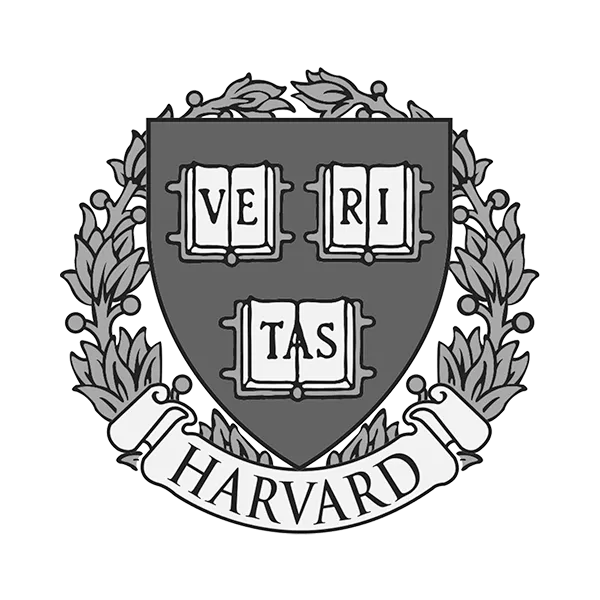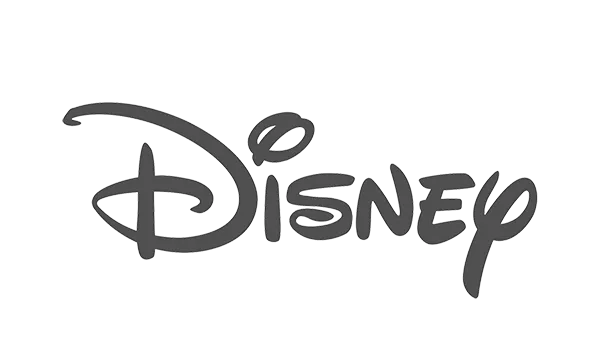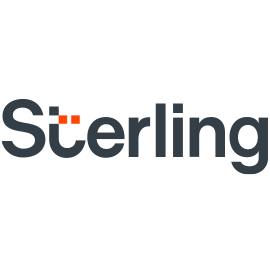In the recruitment world, most people are aware of the 'headhunters' – those who actively seek out and approach potential candidates with job opportunities. However, there is a whole other side to recruitment that is often less visible: the operations side. This is the team that manages the behind-the-scenes of recruiting, from streamlining processes to analyzing data.
Peter Stein is the Recruiting Operations Manager for Clear Street. He's passionate about business operations and making processes more efficient, and he's got an extensive background in consulting, management, and software implementation.
According to Peter, "This idea of a team [that manages] the operations of a recruiting team is new and forward-thinking in a lot of ways… Recruiting and, as a subsect of that, recruiting ops is seen by a lot of companies as a support function where a hiring manager needs a role, and you will be the one to post it and make sure it gets filled and that’s kinda that… Recruiting as a whole is the team that grows the business.
He explains that, “If you’re going to treat [recruitment] as a support function, not as the strategic, technology-based function that it is (or is supposed to be), you’re just doing yourself a disservice."
We recently spoke with Peter about his experience during the first 90 days on the job. Let's see what he had to say.
Understanding Recruitment Ops
What is recruitment operations, exactly? (2:25)
"We are the team that is charged with basically all of the processes and systems that our recruiting team uses. We're constantly evaluating new systems for the team to use; we are digging into the data that's coming out of our recruiting processes, answering basic questions like time to hire, cost per hire, and things like that," Peter explained.
In the context of recruiting, this makes perfect sense – hiring new talent is a data-driven process, and goes significantly deeper than simply looking at a person's resume and conducting a quick phone screen.
Consider that most recruiters estimate the cost of each new hire to be around $3,000. With such an investment on the line, it's crucial that recruiters have the most efficient and effective systems in place to identify top talent as quickly and affordably as possible.
This is where recruitment operations comes in. The team's role is to optimize the process by which recruiters find, assess, and hire new employees. And it works; research shows that there is a direct link between lowering the time it takes to hire someone, and reducing the cost of the hire.
"[We dive] into those metrics to see what we're doing well, and what areas of improvement we can identify. And then based off of that, we create projects to make our team as efficient and cost-effective as possible when it comes to bringing new people to join the company."

What skills are needed in recruitment ops? (4:57)
"At its base, it's a problem-solving sort of role. We do deal with data, and there's absolutely a need for somebody with strong data analytics, [but it] doesn't need to be super advanced. Anybody who is pretty well versed in Excel will do well here."
Peter found that his transition from consulting to recruitment operations was relatively smooth, as both at their core are problem-solving roles. Data is collected and analyzed to reveal potential bottlenecks or areas for improvement. From there, the team works together to develop creative solutions and implement changes.
"At the end of the day, anybody that at least knows a reasonable amount about data, is interested in solving problems, and can be a project manager and balance multiple things at once, is going to do well in this role. And just like for any job, having an inherent interest in the subject matter is also going to go a long way."
Peter's Experience at Clear Street
Set the stage for us – how many people are you recruiting? How large is the business? (8:29)
"When I joined Clear Street last November, we were at about 250. And now we're well over 300. I think the last I checked, it was 330. So we've been growing pretty rapidly on Clear Street," Peter informed us.
Thanks to recruitment operations, the process has been going smoothly – but the recruitment ops team wasn't always a part of Clear Street.
"Our recruiters were so focused on bringing people into the business, there was no team that really had the bandwidth to answer some of these questions, like 'what is our cost per hire?' Certainly, the data was available, but in terms of having a team to start to look at these things, understand what we're doing well, what we're not doing well, didn't exist."
This is the case for many businesses. The focus is often placed too heavily on finding and onboarding talent, with little thought given to the overall efficiency of the process.
But as a business scales, this changes. Suddenly, it becomes apparent that to continue growing, a more strategic and organized approach to recruitment is needed.
"I have to tip my hat to our forward-thinking leadership team for bringing in a recruiting ops function so early, because I think a lot of the time that gets overlooked entirely – let alone to bring it in when the company is 250 people and growing rapidly."
Clear Street is now one of the front-runners in its industry for having an operationalized recruitment process in place. There's a focus on data and analytics, which has allowed the team to measure the success of different channels and strategies.
"The reason that the company has been growing so rapidly is that we're able to offer clients, which are mostly institutional investors, access to real-time reporting, which is surprisingly something that's not available for most prime brokerages. We generally onboard clients within two weeks, while our competitors can take up to six months."

Whose idea was it to stand up for recruiting ops? How did you get exec buy-in? (12:19)
While Peter wasn't directly involved in the pitching and job acquisition, he witnessed the growth of Clear Street's recruitment ops team as a manifestation of their forward-thinking attitude and dedication to meeting the needs of their clients.
"The leadership team understands the value of...a partnership between the hiring manager and the recruiters. They have several meetings, they're analyzing pipelines together. They're even sourcing candidates together in some respects. So I think the establishment of recruiting ops is just an extension of that same mindset – it's recruiting as a whole team that grows the business."
Even without a forward-thinking team, however, getting executive buy-in can be as simple as data analysis. Shortening the cost and duration of hires is already a top priority for companies – so if you can successfully demonstrate that adding a recruitment operations team will improve the bottom line, executives are more likely to be on board.
The First 90 Days
What were your main strategies in the first 90 days?
The behind-the-scenes aspects of recruiting are all about assessment, analysis, and action. Peter explained the strategies he used in his first three months on the job to improve the process and fill the open requisitions:
1. Create a year-in-review
First, Peter assessed the year in terms of recruitment to see what had been done well, what could be improved, and where the team should focus their energy next.
"That helped me frame what are we doing well, what are we not doing well, and where can we improve. And it also helps show the rest of the business what exactly we're doing. In addition to cost per hire and time per hire, I was looking at the sources of the hires.
Were they inbound? Did they find us? Did we find them via outbound sourcing? Did they come from agencies, or were they a referral?"
This analysis helped him develop a plan for the coming year and understand what strategies needed to be put in place to improve the process.
2. Assess cost per hire
Of course, one of the primary focuses for recruitment ops is reducing the cost per hire. Peter looked at where the team could improve their process to bring that number down.
"It's a complex metric when you think about it because, even when an agency is not involved, you have to think about the time that people spent to bring this person in.
How many hours did our engineering team spend interviewing? How many hours did our recruiting team spend interviewing? How much do we spend on recruiting tech? How much did we spend on marketing or ads to try to bring people in?"
These are all important factors to consider when trying to reduce the cost per hire.
3. Look at software systems
Recruitment software is a tool used by the majority of businesses these days, and it's important to assess the right system for your company. Peter looked at what software the team was currently using and what resources they needed to improve their process.
"One thing that we wanted to do as soon as I joined was put in a system to gather candidate feedback. Aside from anecdotal evidence from recruiters and some hiring managers, we didn't really have much data on how candidates feel about interviewing with Clear Street.
We wanted to [know] how our individual interviewers or interview teams were doing. How do they compare to one another? How do candidates feel about that experience?"
HR Tools for Strategic People Ops
What does your tech stack look like on the recruiting side of things? (18:02)
A tech stack in recruiting is essentially the tools and technologies used to support the recruiting process. This can include an applicant tracking system (ATS), a social recruiting tool, email marketing software, and more.
Peter is heavily invested in this side of the business and has a great eye for talent acquisition technology. He gave us a rundown of the systems currently used by Clear Street.
Applicant tracking system: Greenhouse
An ATS is generally used for keeping tabs on applicants and their status, as well as measuring sourcing and recruiting efforts. Peter uses Greenhouse for Clear Street's applicant tracking.
"If there's one thing greenhouse is great at, it's integrating with any other systems you could possibly think of. So we use that for ATS. It's also very user-friendly, which I appreciate."

Candidate relationship management: Gem
CRM software is another commonly-used tool in recruiting. It helps recruiters keep track of communications with candidates, as well as their interactions and notes about those candidates. Gem is Clear Street's CRM of choice.
"We use Gem for two main functions. Our recruiters use Gem to source and set up email drip campaigns. We also use Gem because it has a very robust talent and recruiting analytics component. So it's got great data visualizations, and it's also super user-friendly."
Peter also uses the tool to automate reports and send them to hiring managers via Slack.
"Weekly, they can get updates into: What does my pipeline look like? How many people are in the onsite stage? How many people are in preliminary phone screen? How many applications did we get?"
Candidate experience management: Guide.io
Peter has just begun working with Guide, a fairly new company, to improve the recruiting experience for candidates. Jobseekers must be won over not just by the company and the position, but also by the entire process.
"Through Guide, we can unveil all sorts of content about our company and why they should be interested in Clear Street. As they move through the process and advance through the stages in Greenhouse, more tabs in their Guide URL will unlock. So you can get more and more granular as a candidate moves through the process."
Guide moves candidates through the entire process, from initial contact to final recruitment.
"At the offer stage, you can start to serve up content about the benefits we offer and further try to sell candidates on why they should accept the offer. So it's a great marketing automation tool, and allows us to share content about our business to candidates as they move through the process."

How do you approach looking at unstructured data? (22:58)
Recruiting data is never perfect. Often, the recruitment ops team is dealing with data that is incomplete, messy, and difficult to understand. As a result, it can be hard to know where to start when trying to optimize or improve recruiting operations.
"It's not a black and white or concrete thing where everything is going to go perfectly. Especially when it comes to bringing people into a business, there are always things happening outside of the standard process."
To cope with the inherent unpredictability of recruiting data, Peter relies on his team relationships and stakeholder communications to help him make informed decisions.
"It's really a people-focused job. You have to hear what people are saying, and keep track of these trends in the way that you best see fit."
At one point during those first 90 days, Peter was faced with a challenge in which candidates were spending too much time moving through the various interview stages. His tech stack could only give him data on duration – but he needed to answer the "why".
"I had to look at individual candidates to see what was happening here. As it turned out, most of the time we were reaching out to candidates to get their availability, and then we either weren't hearing back from them, or they were providing availability for interviews two-to-three weeks in the future. And I was able to find enough data to support that."
Sometimes, it is the recruitment ops' job to look beyond the data and into the reasons behind it – even if it feels a little outdated.
"There's a ton of tools that are coming out to make things like this better. But there are still cases like this, where you have to do things rather manually to get the answer that you want to get."
What are your guidelines and processes for finding new tools? (32:36)
Peter informed us that a team of his size (two to three people) is feasibly capable of rolling out a new tool every few months. With that in mind, what is the process he uses to select and implement new tools?
1. Identify the problem or bottleneck. "There's no point fixing a problem that doesn't exist." Before moving forward with tool implementation, assess whether the identified problem is indeed worth addressing with a new tool, or if it can be solved by simply updating an existing process.
2. Find the right solution. "This step is important, and it's sometimes overlooked – is this software the right solution?" Don't jump to conclusions; take the time to research and evaluate potential tools before making a decision.
3. Select a vendor. "When I was looking for a candidate experience tool, I went on Select Software Reviews and posted a question there." Choosing the right vendor takes a lot of research, but reaching out to trusted sources (like the Select Software Reviews community) can help make the process easier.
4. Pilot the tool. Demos are generally free, and they're a great way to get a sense of how the tool works in your specific environment.
5. Evaluate the decision. "When you've reached the decision, make it clear why you did, and what the pros and cons were of each." Once the tool is implemented, take the time to evaluate how it's functioning and make changes (if necessary) before moving on to the next tool.

What impact has your recruiting team had? (39:01)
To round us out, Peter gave a brief overview of how his first 90 days impacted the operations at Clear Street.
"We completely cut out agencies, so our cost per hire has gone down over 25% from the first half of last year. The company has grown rapidly. Every quarter we're setting new records for hires per quarter, and we've met our targets for what we'd expect for a company of our size and at our stage."
Needless to say, the success of Peter's first 90 days in recruiting operations had a ripple effect throughout the company. So how can you go about making such a successful impact in your organization?
"At the end of the day, our role is to make sure we can support the growth of the business. Your job is to grow the business – so getting candidates through the door is priority number one, and implementing a new system or process is important to support that growth."
Ultimately, organizations need to shift their mindset when it comes to recruiting operations and see it as an essential piece of the company – not just an added expense. By doing so, they can focus on creating a system that meets their specific needs and allows for continued growth.
"I think a lot of a lot of companies just rely on that old kind of application processing agency approach, and you can do that, but it's costly. At the end of the day, it's a strategic function – there's no way around that. So if you're not thinking about it, you're going to lose out to your competitor who is."



















